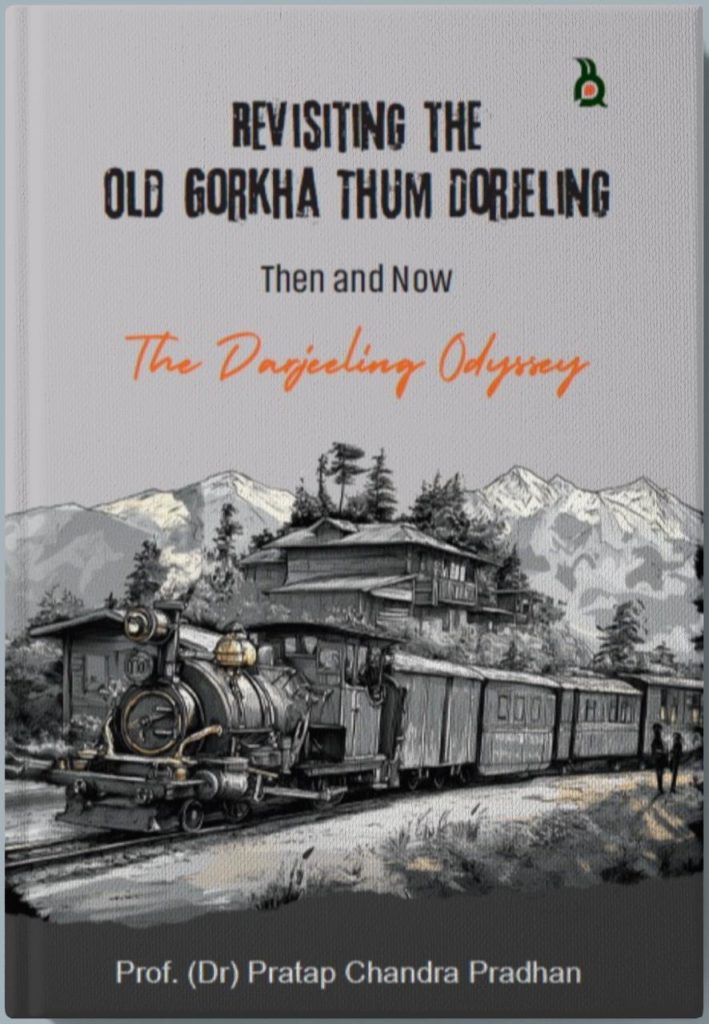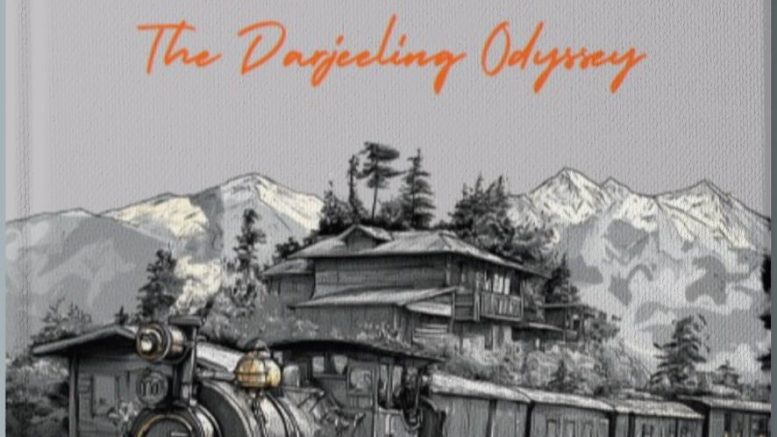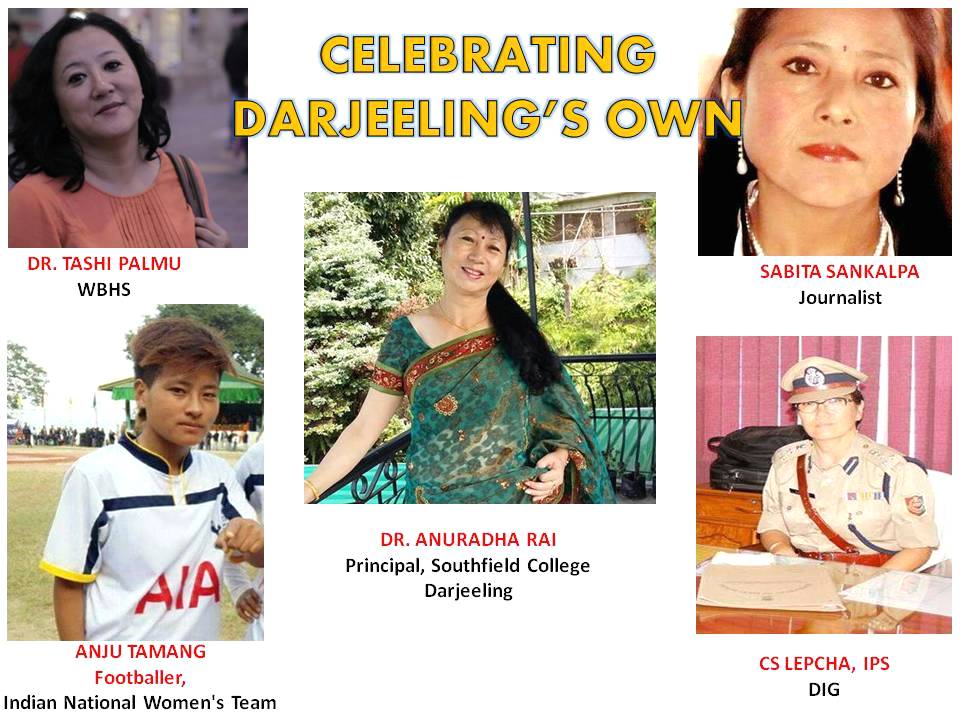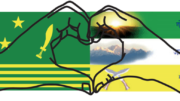“Revisiting the Old Gorkha Thum Dorjeling: Then & Now The Darjeeling Odyssey” by Pratap Chandra Pradhan – ISBN 978-81-987416-2-2 – Reviewed by Dr. Samar Sinha
Pratap Chandra Pradhan, a well-known littérateur and film-maker in Nepali, has established himself as a chronicler of Darjeeling with his Nepali book Purano Gorkha Thum, Dorling: uhile ra ahile, published in 1984. Since this book was banned in India, when I met him for the first time in 2011, I asked him for a copy, which he couriered a photocopy a week later.
Revisiting the Old Gorkha Thum Dorjeling: Then and Now, with a subtitle, The Darjeeling Odyssey, is an updated English version of the same earlier book, an odyssey from Darjeeling’s past to its future as Gorkhaland. He relegates the popular British narrative on Darjeeling, beginning with the Deed of Grant in 1835. Although he does not cite the sources, Pradhan mentions that Darjeeling was part of the Kingdom of Prag Jyotishpur; later, it was under the Bodo and Koch dominion in the 16th century. Further, he provides an account of Darjeeling as a thum (lit. hillock), an administrative unit for taxation under the Kirat rule.
Pradhan cites the earliest Sikkimese record of 1761, which mentions a monastery at Mahakal Dara (the Observatory Hill) at the present-day Darjeeling town. He does not say that Darjeeling was/is a part of Mayelyang(of the Lepchas)as toponyms and hydronyms suggest, but he writes, “local place names, archaeological findings and historical records indicate that the area was inhabited by … the Lepcha, Bhote, Limbu, Kirat Rai and Magar” (pg. 20). With his vast repository of references across the chapters, Pradhan establishes that “prior to 1835, …present day Darjeeling and Sikkim was home to …Nepali speaking communities.” (pg. 26) rather than of the immigrants.
He narrates that from 1789 to 1816, Darjeeling was a part of Nepal. In the Anglo-Nepal War (1814-16) and the subsequent Treaty of Sugauli in 1816, Nepal had to cede Darjeeling to the East India Company (EIC). It was the Treaty of Titalia with Sikkim in 1817, the EIC reinstated Darjeeling to Sikkim, making the latter a buffer state between Nepal, Bhutan and Tibet. However, Antu, a hilltop now in Nepal, remained a contention between Sikkim and Nepal. In 1828, Captain (later, General) Lloyd and Grant set foot on Darjeeling to mediate the issue, and the British romance with Darjeeling began from then.
In 1835, through the Deed of Grant, the EIC acquired, “…out of friendship … all the land south of the Great Rungeet River, east of the Balasan River, Kalyail and Little Rungeet Rivers, and west of the Rungus and Mahanadi Rivers”(Mainwaring 1876: viii). Besides, he has elaborated on the ‘push and pull factors’ that led to Darjeeling’s transformation, and the birth of Nepalipan and the emergence of Gorkha. These parts of Darjeeling’s history are often repeated in several chapters in the book.
By Captain Lloyd’s estimate, “all the land” was “30 miles long and 10 miles at some places in breadth,” and was referred to as the “Darjeeling Tract” (Pinn 1986: 15) rather than Darjeeling. This polysemy of Darjeeling between “Darjeeling Tract” and the Darjeeling district (see Mukherjee and Mercer (1962) on the formation of the Darjeeling district) is blurred, and often the reader gets an impression of today’s Darjeeling rather than the “Darjeeling Tract.”
Kalimpong, a Bhutanese territory, was integrated with Darjeeling following the Treaty of Sinchula in 1865. In 2017, the Darjeeling district was bifurcated into Darjeeling and Kalimpong districts. He narrates that the trade relations with Sikkim, Bhutan and Tibet flourished via Kalimpong. Ultimately, Pradhan provides how “Kalimpong (which) was considered insignificant” (pg. 23) became a strategically important satellite town of Darjeeling, and became “a contact zone” (see Viehbeck 2017).
Pradhan makes reading pleasant in his several accounts on the etymology of Darjeeling and its spellings. Although he has not mentioned Waddell (1899/1998) and Wangyal (2023) for various other etymologies of Darjeeling, including its forgotten version as Dorjeelingka – a place of thunderstone (corresponding to Norbulingka in Dharamsala, Himachal Pradesh, India). He mentions how Darjulyang (lit. abode of Gods in Lepcha, see Plaisier 2007: 176), Dorjeling (the cave of the mystic thunderbolt, see Waddell 1899/1998), Dorling, Darjiling became Darjeeling to refer to Queen of Hill Stations, Queen of Hills, Old Gorkha Station, Purano Gorkha Thum, summer capital, etc. and became famous for Tea, Tourism and Timber or toy-train.

In a similar spirit, in nine chapters, he traces the status of Darjeeling as a sanatorium, as a part of the Rajshahi under the EIC, under the Bhagalpur administrative division in the post-Bengal division, Excluded Area, Partially Excluded Area, Absorbed Area, Greater Nepal, a separate administrative unit (for Darjeeling) under the Hillmen’s Association (1917), integration with Assam by Akhil Bharatiya Gorkha League (1943), Gorkhasthan including Sikkim by Communist Party of India (1947), Gorkhaland movement and its backdrop (under Subash Ghising and Bimal Gurung), limited autonomy under Darjeeling Gorkha Hill Council (DGHC) and Gorkha Territorial Administration (GTA), demand for the Sixth Schedule tribal council, etc. In essence, he has dwelled upon every aspect of Darjeeling, including language movement, Gorkha vs. Nepali, the perception created by the 1950 Indo-Nepal Friendship Treaty, establishment of political parties, 15 Development Boards, Darjeeling-Sikkim merger, Five-Decimal Plot, proposal for integration of Darjeeling into the North East Council (NEC), etc.
Pradhan has proposed a narrative (opposed to the colonial account) to ascertain a deeper symbiotic relationship, background, and aspirations between Darjeeling and its populace, revealing undocumented, unwritten, hidden aspects, or bringing into the forefront those kept in the shadows. In chapter IX, by highlighting the contemporary development regarding ‘Permanent Political Solution’ (PPS), and the existential angst that Darjeeling and its people face, he opines that a “Think Tank Organisation” to steer towards Gorkhaland. Penultimately, as an elderly statesman, he has placed “Key Points for Consideration” (pg. 164) – a hope that can be effective in the future struggle for Gorkhaland.
It is important to flag out that “the Lepcha and Bhutia …these tribes are descendants of those migrated from eastern Sikkim to settle in Sikkim” (pg. 28-29) is true regarding the Bhutias, not the Lepchas. In chapter II, Pradhan has stirred up a hornet’s nest – “tribe,” a problematic category as it evokes and connotes different meanings to different sectors of the Indian population (see Sinha & Turin in press). On the issue of “tribe” in Darjeeling, Pradhan has surprisingly taken recourse to the 1991 Constitution of the Nepal Federation of Indigenous Nationalities (pg. 40), for no apparent empirical reason. It is an unwanted anchorage and could have been avoided by the author. There are a few editing errors like “Hooker historian” (pg. 26); “migrated eastwards into Sikkim” rather than “migrated southwards into Sikkim” (pg. 27); Ballabh Mani (not Vallabhmani pg. 30); Kalyail (not Khare pg. 37); “prposed” (pg. 75); “The words indigenous, tribe, native, immigrant, and forest-dweller are actually derived from Nepali” (pg. 39) and “Gorkhaland or Nepali land” (pg. 44), on Khye Bumsa, etc. need further elaboration. Similarly, “Madan Tamang, a former leader of the Darjeeling Hill Council” (pg. 74) and his discussion of the sociological categories are off track. Although he has cited 34 references, Waddell (1899/1998), Pinn (1986), Namgyal & Dolma (1908), Pradhan (2008) and Mainali (BS 2070/2071) are felt to be missing prominently.
Revisiting the Old Gorkha Thum Dorjeling: Then and Now, with a foreword by Durga Pradhan (author’s close relative and social activist), is a result of Pratap Chandra Pradhan’s longitudinal study of Darjeeling, driven by personal anecdotes, supported by various individuals and institutions as mentioned in his acknowledgements. The book dedicated to the martyrs owes its genesis to the idea of “preserving the knowledge of the past, present, and future of the historical soil of our ancestors.” It is enriched with maps, photographs, followed by references and a glossary. The book cover, illustrated by Avishkar Chandra Pradhan (the author’s son, a Bangalore-based artist), has lent an additional idyllic charm to Darjeeling and its toy train. The book is supplemented with quotes and Nepali proverbs (in English) and pointers to the literary works that make reading enjoyable, but the in-text citation is awkward. He has used Roman as well as Devanagari for the Nepali and other terms, which have successfully captured the essence in addition to the glossary of these words. However, printed on the FSC-certified paper, the pagination does not adhere to the publication standards. One realises that the book could have been better curated by the publisher.
Despite these matters not so diverting, Revisiting the Old Gorkha Thum Dorjeling: Then and Now, a narrative on the transformation of Darjeeling, offers a ground to engage with the communities and autonomy. The book is without any theoretical underpinnings that make it easily accessible to common readers. Like his personality, Pradhan is soft, mild, polite, cautious, wise, as well as essentialist in his writing too. Revisiting the Old Gorkha Thum Dorjeling also (re)establishes the tradition of storytelling about Darjeeling, and Pradhan as a tall chronicler. In addition, undoubtedly, it is not only a new landmark in the study of Darjeeling (in English), but also stimulating enough to pursue the PPS of Darjeeling as Gorkhaland, yet another Darjeeling’s transformation that the author envisions.
References
- Mainali, Mohan. BS 2070/2071. Mukam Ranamaidan. Kathmandu: BookHill.
- Mainwaring, G. B. 1876. A Grammar of the Róng (Lepcha) Language. Calcutta: Baptist Mission Press.
- Mukherjee, B.K. & Mercer, A.V. A. 1962. A Short History of Darjeeling and its People. (Publisher not mentioned).
- Namgyal, Thutob & Dolma, Yeshay. 1908. History of Sikkim. (Translated by Kazi Dousandup)(Publisher not mentioned).
- Pinn, Fred. 1986. The Road of Destiny: Darjeeling Letters 1839. Calcutta: Oxford University Press.
- Plaisier, Heleen. 2007. A Grammar of Lepcha. Leiden: Brill.
- Pradhan, Gupta. 2008. Dhumil Pristaharu. Darjeeling: Gama Prakashan.
- Pradhan, Kumar. 2004. Darjeelingmaa nepali jaati ra janjaatiyaa chinarikaa nayaa adhanharu. The Mahesh Chandra Regmi Lecture 2004. Kathmandu: Social Science Baha.
- Pradhan, Pratap Chandra. 1984. Purano Gorkha Thum Darjeeling uhile ra ahile Gorkhalandtira. Darjeeling: Deepa Prakashan.
- Sinha, Samar & Turin, Mark. in press. The Tribal Languages of Sikkim.In Devy, G.N. & Temsen, Grace (eds.), People’s Linguistic Survey of India. Tribal Languages of India — the North East, Vol. 40. Delhi: Orient BlackSwan
- Viehbeck, Markus. (ed.). 2017. Transcultural Encounters in the Himalayan Borderlands: Kalimpong as a “Contact Zone.” doi: https://doi.org/10.17885/heiup.301.409
- Waddell, L.A. 1899/1998. Among the Himalayas. Delhi: Pilgrims Book Pvt. Ltd.
- Wangyal, Sonam B. 2023. Darjeeling Place Names. Darjeeling: BukAnt.
—
Samar Sinha (PhD, JNU) teaches Linguistics and Semiotics in the Department of Nepali, Sikkim University. He is the Coordinator of the Centre for Endangered Languages at Sikkim University, Sikkim, India.







Beautiful! Thoroughly enjoyed the article.